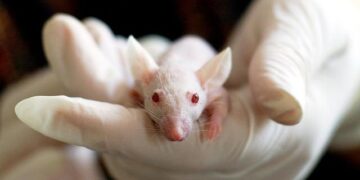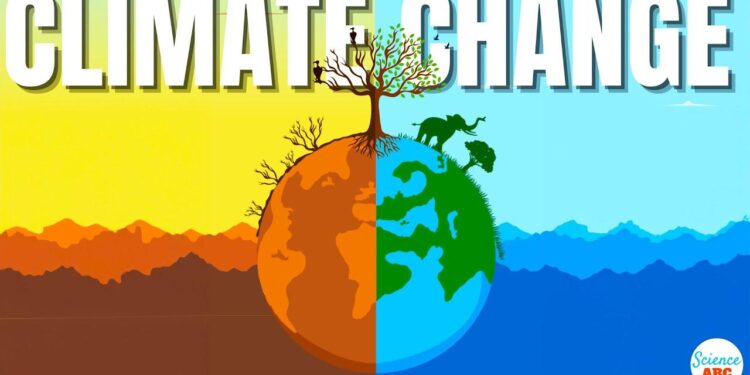As global temperatures continue to rise, a troubling phenomenon is emerging within ecosystems worldwide: climate change is creating “ecological traps” that threaten the survival of numerous species. According to recent research highlighted by Bioengineer.org, many animals and plants struggling to adapt to shifting environmental conditions are being lured into habitats that appear suitable but ultimately jeopardize their chances of survival and reproduction. This unsettling dynamic underscores the complex and often unintended consequences of climate change, raising urgent questions about biodiversity conservation in an era of rapid ecological transformation.
Climate Change Creates Ecological Traps Hindering Species Survival
Rapid shifts in temperature, precipitation patterns, and seasonal cues caused by global warming are tricking wildlife into making maladaptive choices, leading to what ecologists now term as ecological traps. These traps occur when species rely on environmental signals to select habitats or breeding sites that historically indicated suitability but now offer diminished survival prospects. For example, some migratory birds arrive earlier in their breeding grounds due to warmer springs, only to find that their primary food sources have not yet emerged, jeopardizing offspring survival. These mismatches can cascade through populations, increasing mortality rates and hindering reproductive success.
Species unable to adjust quickly face significant declines, as ecological traps disrupt their life cycles and spatial behaviors. The problem is not limited to terrestrial animals; aquatic species are similarly affected by altered water temperatures and chemistry. Below is a snapshot of common ecological traps exacerbated by climate change:
- Habitat selection errors: Choosing suboptimal nesting sites due to misleading environmental cues.
- Mismatched phenology: Timing breeding or migration at suboptimal periods.
- Altered food availability: Dependence on resources that are no longer synchronized with life stages.
| Species | Trap Type | Main Consequence |
|---|---|---|
| Wood Thrush | Phenological mismatch | Reduced chick survival |
| Coral Reefs | Thermal stress | Mass bleaching events |
| Pacific Salmon | Altered migration timing | Increased predation risk |
Examining the Impact of Rapid Environmental Shifts on Wildlife Adaptation
As global temperatures rise at unprecedented rates, many species find themselves trapped in rapidly changing habitats that no longer provide the resources they evolved to depend on. This phenomenon, often referred to as an “ecological trap,” forces wildlife to make maladaptive choices that jeopardize their survival. For example, birds may continue to nest in areas where food availability and shelter have drastically diminished, while amphibians might lay eggs in drying ponds that fail to support tadpole development. Such mismatches between environmental cues and actual habitat quality are increasingly common, highlighting the urgent need for conservation strategies tailored to dynamic ecosystems.
Researchers emphasize that adaptation is not simply a matter of genetic evolution, but also behavioral flexibility and resilience to environmental stressors. Key factors influencing successful adaptation include:
- Rate of environmental change: Sudden shifts outpace species’ ability to adjust.
- Habitat connectivity: Fragmented landscapes limit migration and gene flow.
- Species-specific traits: Generalists often fare better than specialists.
| Adaptive Trait | Likelihood of Success |
|---|---|
| Behavioral Plasticity | High |
| Genetic Mutation Rate | Moderate |
| Habitat Specialization | Low |
Innovative Conservation Strategies Urged to Mitigate Ecological Risks
As global temperatures rise and habitats transform at unprecedented rates, researchers emphasize the urgency of adopting novel conservation approaches to prevent widespread species decline. Conventional methods focused solely on preserving existing environments no longer suffice, as many species face the danger of becoming ensnared in ecological traps-situations where their evolved behaviors lead them to poor habitat choices that threaten survival. Scientists advocate for dynamic strategies that incorporate habitat restoration, assisted migration, and the use of cutting-edge bioengineering techniques to enhance resilience in vulnerable populations.
Key innovative interventions include:
- Selective gene editing to bolster climate adaptability in critical species
- Smart habitat corridors designed through AI-driven landscape modeling to facilitate safe species movement
- Enhanced monitoring networks using drone and satellite technology for real-time ecological data
- Community-led stewardship programs blending traditional knowledge with scientific insights
Below is a summary table highlighting potential impact areas and proposed solutions for ecological risk mitigation:
| Ecological Risk | Innovative Strategy | Expected Outcome |
|---|---|---|
| Habitat Fragmentation | AI-designed wildlife corridors | Improved species dispersal |
| Species Genetic Vulnerability | CRISPR gene editing | Increased climate resilience |
| Delayed Response to Environmental Change | Real-time monitoring systems | Faster conservation action |
| Loss of Indigenous Land Stewardship | Community engagement programs | Strengthened ecosystem management |
The Conclusion
As climate change continues to reshape ecosystems at an unprecedented pace, the emergence of ecological traps presents a daunting challenge for countless species striving to adapt. This latest research highlights the urgent need for targeted conservation strategies that account not only for changing habitats but also for the behavioral pitfalls that may hinder survival. Without swift and informed action, the very adaptations that species rely on could inadvertently lead them toward decline, underscoring the complex and multifaceted impact of a warming planet.































